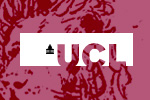

 |
 |
WelcomeThis studypack is aimed at students who study Dutch as a second (or foreign) language and who have some knowledge and understanding of the history of Belgium and are interested in exploring the language question in Belgium in some more detail. This pack is for self-study or for use in a history or cultural studies course on the Low Countries. The pack is designed to help you gain a better understanding of some key features of the ##Flemish Movement in the years preceding World War I, using five historical sources from this period. You can read fragments from each source, study the historical background, analyse certain themes, dissect major concepts and get a deeper insight using pictorial material. In addition, you can check out a brief chronology of the history of the Flemish Movement (from 1830 to the present), a glossary and a bibliography. The studypack aims to be as interactive as possible: each section includes a series of questions with model answers and there is also an entire ´questions & answers´ section where you will be tested on your knowledge and understanding of the entire studypack. Test yourself: try first to give an answer to the questions yourself and then compare your answer with the model answer through the hyperlink. In order to gain the most from this pack, you should have some prior knowledge of Belgian history and of the main developments in the history of the Flemish Movement. If it is an integral part of a course, we recommend this studypack only if you have already taken an introductory history or cultural studies course which covers the language question in Belgium. If the pack is for self-study and is not followed up in class by a teacher, you will be expected to have done a follow-up (or second-level) history or cultural studies course. In designing this studypack we wanted this studypack to be used by intermediate students of Dutch. The vocabulary and idioms are based on the dictionary Nederlands als tweede taal (NT2) (Utrecht/Antwerpen: van Dale, 2003). Words or idioms not featuring in this dictionary, are explained through a hyperlink. We will explain a new word or a new expression only once – hence we suggest you work your way through the pack in the recommended order, unless you are an advanced student of Dutch. The contents are listed on the left banner and can be used to move from screen to screen. Start on this page and then just follow the links which will appear throughout. Alternatively, if you have little time, just study one or two sources and sections. Introduction to the studypackThe sources used in this studypack are five texts (a study, a speech and essays) written by prominent figures in the history of the Flemish Movement: Julius Vuylsteke, Julius MacLeod, Lodewijk de Raet, August Vermeylen and Frans van Cauwelaert. Using fragments from these sources we will trace the development of the Flemish Movement in the period from 1860 to 1914. In this period the Flemish Movement entered the political stage and, ideologically speaking, switched to a higher gear. We will study all of this in five small chapters, but first you can >check out what you know about the birth of the Flemish Movement and the background history of the making of the Belgian state by clicking here. |